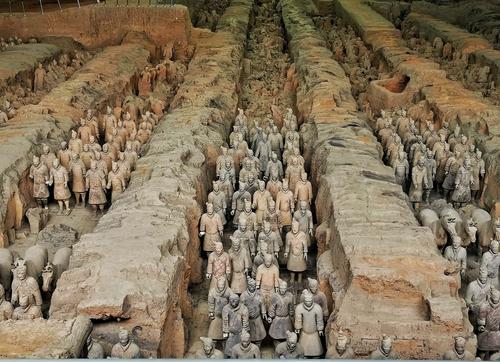
Where Can I See the Terracotta Army?
While many associate the Terracotta Army with Beijing, they are actually located elsewhere in China. Here's a detailed look at the exact location of this historical treasure:
The Terracotta Army is Not in Beijing
The Forbidden City, or known as the Palace Museum is in Beijing, North China region, while the Terracotta Army is now exhibited in Emperor Qinshihuang's Mausoleum Site Museum (秦始皇陵博物院).
Many people mistakenly believe the Terracotta Army is in Beijing. While Beijing houses other historical wonders like the Forbidden City and the Temple of Heaven, the Terracotta Army is situated in Xi'an, the capital city of Shaanxi province in central China.
The Terracotta Army's Location: Xi'an, China
Xi'an, an ancient city with its own rich history, is approximately 1,164 kilometers (723 miles) southwest of Beijing. The city is easily accessible by plane, train, or even a comfortable high-speed train journey.
Within Xi'an, the Terracotta Army is located approximately 30 kilometers (19 miles) east of the city center at the Emperor Qinshihuang's Mausoleum Site Museum.
Visiting the Terracotta Army
The museum is open daily and offers various ticket options. It's advisable to purchase tickets in advance, especially during peak tourist seasons, to avoid long queues.
Once inside the museum, you can explore the three main pits where the Terracotta Army was unearthed. Each pit houses thousands of unique terracotta figures, including warriors, horses, chariots, and more.
FAQs about Visiting the Terracotta Army
- Q: How do I get to the Terracotta Army from Xi'an city center?
A: You can take a public bus (Bus No. 306, 914, or 5), a tourist bus, or hire a taxi to reach the museum.
- Q: How long does it take to explore the Terracotta Army Museum?
A: Allow for a minimum of 3 hours to fully appreciate the vastness and detail of the site.
- Q: Are there any other attractions near the Terracotta Army?
A: Yes, you can visit the nearby Mausoleum of the First Qin Emperor, which is a UNESCO World Heritage Site, or explore the nearby Huaqing Palace.